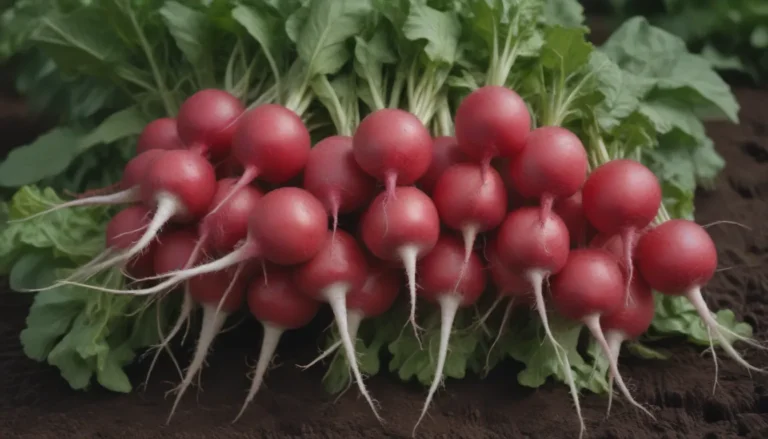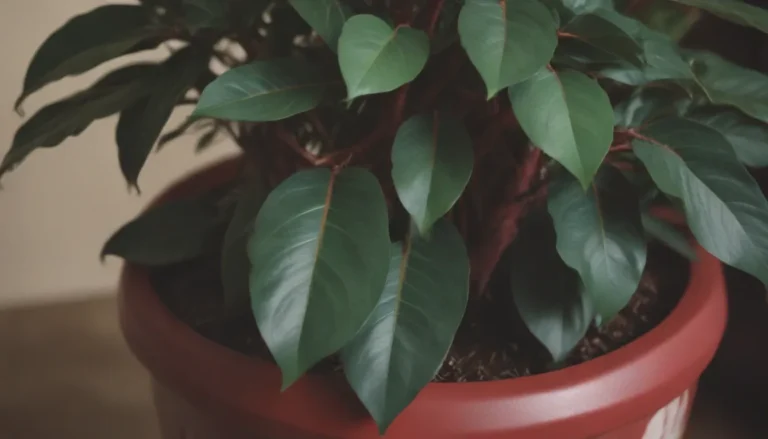Your Ultimate Guide to Growing Heliconia (Lobster Claw) Indoors
Are you a fan of tropical plants but live in a temperate region? Do you have a green thumb and want to try your hand at growing something exotic indoors? Well, look no further than the beautiful and vibrant heliconia, also known as the Lobster Claw plant. This tropical beauty is known for its bright, colorful bracts that form clusters of flowers, making it a stunning addition to any indoor garden.
In this comprehensive guide, we will explore everything you need to know about growing heliconia indoors. From sunlight and temperature requirements to watering and fertilizing tips, we’ve got you covered. So, grab your gardening gloves and let’s dive into the world of heliconia cultivation!
Can Heliconia be Grown Indoors?
While heliconia is primarily an outdoor plant that thrives in tropical regions, there are a few species that can be cultivated for indoor care. However, it’s essential to note that heliconia is particular about its growing conditions and requires specific care to flourish indoors. Here are a few key points to consider:
- Sunlight: Heliconia requires bright, indirect light for at least eight to ten hours daily to thrive and flower. Place your plant near a west-facing or south-facing window, or consider using a grow light to supplement natural light.
- Temperature and Humidity: Native to tropical forests, heliconia plants prefer warm temperatures of 70°F and above, along with relatively humid conditions. Consider using a humidifier to maintain the ideal moisture level for your plant.
- Watering: Heliconia needs regular watering to thrive, but be sure to allow the soil to dry out slightly between waterings to prevent root rot. Use tepid water and ensure good drainage to keep your plant healthy.
How to Grow Heliconia Indoors
Sunlight
When it comes to sunlight, heliconia plants are quite demanding. To ensure your plant thrives indoors, follow these tips:
- Provide bright, indirect light for at least eight to ten hours daily.
- Rotate the plant periodically to ensure all foliage receives even exposure to light.
- Consider using full-spectrum LED grow lights if natural light is insufficient, especially during the winter months.
Temperature and Humidity
Maintain warm temperatures of 70°F and above for your heliconia plant, and keep the environment relatively humid:
- Use a humidifier to increase moisture levels, especially in dry regions or during the winter.
- Watch out for signs of low humidity, such as brown tips and margins on leaves, and take steps to address them promptly.
Watering
Proper watering is essential for the health of your heliconia plant. Follow these guidelines:
- Water regularly to keep the soil moist but not soggy.
- Allow the soil to dry out slightly between waterings to prevent root rot.
- Use tepid water to avoid shocking the plant’s roots.
Air Circulation
Heliconia plants can be prone to fungus growth, so ensure adequate air circulation:
- Use a ceiling or oscillating fan to provide proper air flow.
- Keep some space between heliconia foliage and other plants to prevent fungal issues.
Fertilizer
Feed your heliconia plant regularly to promote growth and flowering:
- Use a liquid houseplant fertilizer diluted to half strength every couple of weeks during the growing season.
- Opt for a fertilizer with a higher phosphorus content to encourage flowering.
- Consider supplementing with bone meal to strengthen root systems.
Pruning and Maintenance
Maintaining your heliconia plant is essential for its overall health and appearance:
- Remove spent flowers and stems as they fade to promote new growth.
- Wipe dust off the plant’s leaves regularly to help it breathe and photosynthesize effectively.
- Prune old flowering stems to encourage new shoots and maintain plant vigor.
Pollination
In the wild, hummingbirds are the primary pollinators of heliconia plants. While replicating this process indoors can be challenging, there are a few tips to consider:
- Hand pollinate your heliconia plant if needed, using a soft brush or cotton swab.
- Watch for signs of successful pollination, such as the development of fruits at the end of the growing season.
Container and Size
Choosing the right container size and type is crucial for the health and growth of your heliconia plant:
- Use medium-sized pots with adequate drainage holes to prevent waterlogging.
- Consider larger pots for taller or top-heavy plants to provide stability and prevent tipping.
Potting Soil and Drainage
Using the correct potting soil and ensuring proper drainage are key factors in keeping your heliconia plant healthy:
- Use a rich, peat-based potting soil with good drainage characteristics.
- Consider mixing orchid bark and peat moss or coconut coir for an optimal potting mix.
Potting and Repotting Heliconia
Proper potting and repotting procedures are essential for the long-term health of your heliconia plant:
- Repot your heliconia plant every two years or as needed to prevent overcrowding.
- Divide mature plants during repotting to propagate new specimens and maintain plant health.
Moving Heliconia Outdoors for the Summer
If you want to give your heliconia plant a summer vacation outdoors, follow these steps for a successful transition:
- Acclimate your plant gradually to the increased light and temperature outdoors.
- Provide dappled shade and ample water to prevent stress and sunburn.
- Monitor outdoor temperatures to ensure the plant’s safety during the summer months.
Bringing Heliconia Back Indoors
When it’s time to transition your heliconia plant back indoors for the winter, follow these steps for a smooth adjustment:
- Acclimate the plant slowly to the indoor environment to prevent shock.
- Inspect the plant for pests and treat any issues before bringing it inside.
- Maintain proper humidity levels indoors to keep your plant healthy during the winter months.
In conclusion, growing heliconia indoors can be a rewarding experience for plant enthusiasts looking to add a touch of the tropics to their home. By following these tips and guidelines, you can create the ideal growing environment for your heliconia plant and enjoy its vibrant blooms year-round. Happy growing!





